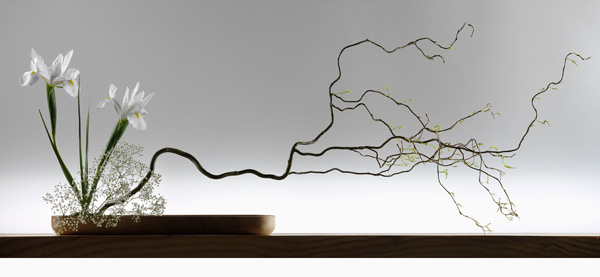 I watched this short video about Ikebana, the Japanese art of flower arrangement, three times.
I watched this short video about Ikebana, the Japanese art of flower arrangement, three times.
Years ago, when I was a teacher, I met a poet, Skip, who insisted children read poems three times to unlock the meaning. He asked them to experience a poem these three ways:
- Read it silently. - Read it aloud, focusing on the sound of the poem -- listening for rhyme and rhythm. - Read the poem aloud, again, as if it is a blooming flower.
Ikebana is more than the creative expression of putting flowers in a container. It's a disciplined Japanese art form that brings nature and humanity together. Steeped in the philosophy that being close to nature provides relaxation, the living branches, leaves, grasses, moss and seedpods produce natural shapes and graceful lines.
“In Japan, flower arrangements are used as decorations on a level with paintings and other art objects … The remarkably high development of floral art in Japan can be attributed to the Japanese love of nature. People in all countries appreciate natural beauty, but in Japan, the appreciation amounts almost to a religion.” ~ Ikebana International
Like poetry, watching this video three times made it bloom for me.
Spring is a tender time. There’s a youthful vibe in the changes and order of nature as life pops. What's blooming for you?
Photo: Shutterstock

 I recently enjoyed a summer evening dining in a friend's garden. I loved the way the moon cast a spotlight of shadows, capturing a mood with white flowers and shimmery plants -- shining amongst the greenery. Nightfall ushered in entirely new and intoxicating sights and fragrances. Some flowers were shut tight sleeping, while others opened in full bloom. There's something mystical and romantic about walking through a garden on a summer evening.
I recently enjoyed a summer evening dining in a friend's garden. I loved the way the moon cast a spotlight of shadows, capturing a mood with white flowers and shimmery plants -- shining amongst the greenery. Nightfall ushered in entirely new and intoxicating sights and fragrances. Some flowers were shut tight sleeping, while others opened in full bloom. There's something mystical and romantic about walking through a garden on a summer evening.





